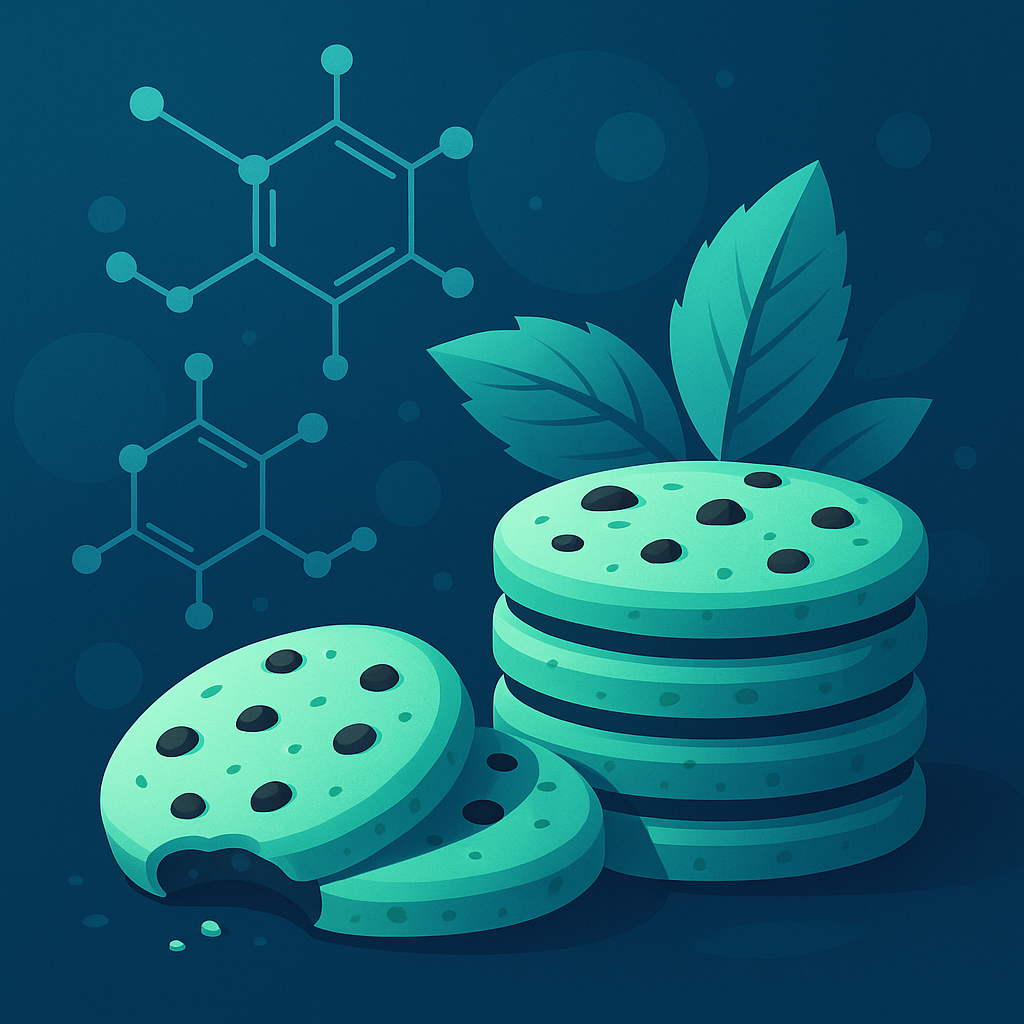Poison in a Box: How a Cookie Exposed America’s Hidden Chemical Addiction and How SOD Sciences Plans to End It

Every year, millions of smiling children fan out across America carrying one of the most trusted brands in the country — a box of Girl Scout Cookies. For decades, Thin Mints, Tagalongs, and Samoas have represented community, entrepreneurship, and nostalgia wrapped in chocolate and cardboard.
Nobody is accusing the Girl Scouts of wrongdoing. They don’t grow crops or formulate dough. The cookie simply became a messenger, revealing a deeper truth about America’s food supply, a truth rooted in chemistry, not character.
In 2024, independent lab testing detected glyphosate, the world’s most widely used herbicide, in every variety tested, along with trace heavy metals in most boxes. Thin Mints, the nation’s best-seller, registered levels over 300× higher than what some researchers consider safe for chronic exposure. The story is about a question: How did our food become chemically stressed, and how can we fix it?
The answer, as it turns out, may not lie in regulation or blame, but in innovation. SOD Sciences is tackling the crisis at its biological root, by repairing oxidative damage in crops and protecting genetically susceptible consumers through precision prevention. By addressing both the field and the family, the company represents a new model for food safety and public health, one grounded in measurable science rather than marketing slogans.
The Real Culprit: Chemical Dependency in Agriculture
For more than fifty years, American agriculture has been optimized for yield, not nutrition. Herbicides, pesticides, and desiccants, especially glyphosate, have been applied across hundreds of millions of acres.
The common misconception is that the danger is limited to surface residue. But glyphosate alters plant biology from within, blocking the shikimate pathway, generating reactive oxygen species (ROS), depleting glutathione, and leaving crops chemically oxidized rather than nourished.
These oxidative compounds, malondialdehyde (MDA) and 4-hydroxynonenal (4-HNE), do not vanish during harvest or baking. They persist into flour, oil, and sugar, and ultimately, into us.
What we’re dealing with is a biochemical fingerprint of stress baked into the food itself.
From Crop Stress to Chronic Disease
When food is grown under chemical stress, it carries a biological imprint of that stress. These oxidized molecules don’t vanish during harvest or baking; they survive and enter the human body through the very products we trust most — cereals, snacks, breads, and even so-called “healthy” foods.
Once consumed, they weaken the intestinal barrier and activate NF-κB, the body’s master inflammation switch. This sets off a slow cascade that erodes immune balance, hormone regulation, and cellular repair, the foundation of chronic inflammation mistaken by many for normal aging.
Mitochondria, our cellular engines, absorb much of the damage. As oxidative stress mounts, energy production falters, tissues lose resilience, and the body transitions from repair to degeneration.
The same oxidative markers found in damaged crops, malondialdehyde (MDA), 4-hydroxynonenal (4-HNE), and lipid peroxides, are routinely detected in patients with metabolic, cardiovascular, and neurodegenerative diseases. The connection between agriculture and illness is not theoretical, it’s biochemical fact.
What begins in the field ends up in the bloodstream. Until we correct the chemistry of our crops, we can’t correct the chemistry of our health.
Why Some People Get Sicker Faster
Not all bodies manage oxidative stress equally. Variants in SOD2 (rs4880), GPX1 (rs1050450), and APOE (ε4) weaken the enzymes responsible for neutralizing free radicals and repairing mitochondria. When these systems falter, oxidative damage accumulates quietly, exhausting cells, accelerating aging, and amplifying inflammation.
For carriers of these variants, even a “normal” diet becomes a slow burn. What one person tolerates for decades might trigger fatigue, infertility, or degenerative disease in another. The difference is genetic load.
SOD Sciences bridges that gap with a genetic-based model for precision prevention. Through a simple saliva test, it identifies individuals most at risk and provides actionable, biology-based guidance, which foods to favor, which to limit, and how to support antioxidant defenses.
It’s data-driven prevention, linking agricultural chemistry and human genetics into one system of protection. The same science that can detoxify crops in the field is now being applied to safeguard the body itself, closing the loop between what we grow and how we live.
The SOD Sciences Solution
At the Field Level: Restoring Crop Health
SOD Sciences has developed a patent-pending post-glyphosate rescue treatment, a foliar application used within 48 hours of herbicide exposure. This treatment restores antioxidant tone in plants, supports glutathione cycling, and reduces the buildup of oxidative byproducts. The result: a measurable decline in the oxidative load that ultimately reaches consumers.
At the Family Level: Precision Prevention
The company is also advancing a low-cost genetic test that identifies key redox-defense variants (SOD2, GPX1, APOE). With this data, families can personalize nutrition, favor low-oxidation foods, and support mitochondrial health through targeted supplementation and diet, a blueprint for prevention based on biology, not guesswork.
From Blame to Biology
The Girl Scouts may not have created this crisis, but they certainly exposed it. The solution isn’t blame. It’s biology. The path forward lies in healing plants upstream and protecting people downstream, a closed-loop system SOD Sciences is already building.
A Call to Action
- Favor organic and regenerative products to reduce exposure to oxidative residues.
- Increase intake of antioxidant-rich foods (crucifers, berries, spices).
- Assess genetic risk once saliva testing becomes widely available.
- Support growers implementing verified post-glyphosate rescue protocols that reduce oxidative markers in crops.
Nature’s Answer to Genetic Deficiency
What began as a cookie controversy is, in truth, a national case study in chemical dependence. The same molecular stress undermining crops is now visible in public health statistics. Yet the same science that exposed the problem may hold the key to solving it.
Not everyone is born with the same antioxidant defenses. But nature offers its own pharmacy. Certain grass-based and botanical compounds can help restore redox balance and cellular resilience.
At SOD Sciences, ancient plant wisdom meets modern molecular precision. By quantifying each individual’s antioxidant defense capacity and correcting deficiencies with proprietary formulations, SOD Sciences is pioneering a new model of precision prevention, one that starts at the seed and ends at the cell.





